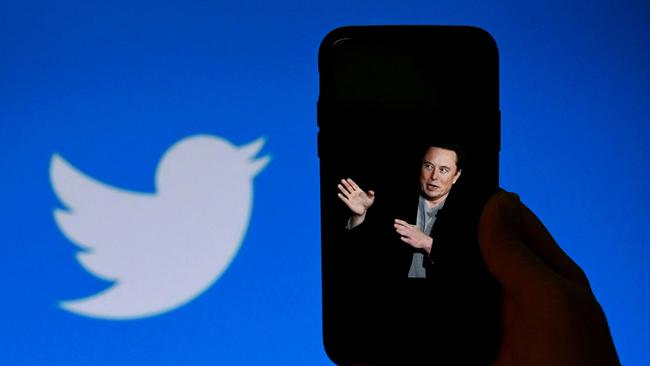Elon Musk explores raising up to $US3bn to help pay off Twitter bebt
The billionaire is holding talks with investors about selling new Twitter shares to help repay some of the $18.3bn in debt tacked onto the sale of the social media company last year.

Elon Musk‘s team has been exploring using as much as $US3bn in potential new fundraising to help repay some of the $US13bn in debt tacked onto Twitter Inc. for his buyout of the company.
In December, Mr Musk’s representatives discussed selling up to $US3bn ($4.2bn) in new Twitter shares, people familiar with the matter said.
Mr Musk’s team has said an equity raise, if successful, could be used to pay down an unsecured portion of the debt that carries the highest interest rate within the $US13bn ($18.3bn) Twitter loan package.
Paying off the debt would provide welcome financial relief to Twitter, which has struggled to keep advertisers on the platform. In November, Mr Musk said Twitter had suffered “a massive drop in revenue” and was losing over $US4m day. He also said that bankruptcy was a possibility for the company, although he later shared more upbeat prospects for the company, saying he expected Twitter to be roughly cashflow break-even in 2023 as he has slashed some 6000 jobs.
In mid-December, Mr Musk’s team reached out to new and existing backers about raising new equity capital at the original Twitter takeover price.
Mr Musk’s advisers had hoped to reach a deal to raise cash at the initial takeover price by the end of 2022, according to an email sent to prospective investors at the time. However, some backers said they baulked at the terms, given concerns about Twitter’s finances.
Fidelity, one of the co-investors that backed Mr Musk’s takeover of Twitter, wrote down its stake in Twitter by 56 per cent in November, public filings show, suggesting Mr Musk would face an uphill battle raising funds at the original valuation from outside investors. The banks holding the $US13bn in debt that backed his takeover haven’t yet received any formal notice of any repayments.
Twitter’s unsecured bridge loans, which total $US3bn, are the most expensive portion of the $US13bn debt package Mr Musk incurred as part of his $US44bn acquisition of the social media company. They carry an interest rate of 10 per cent plus the secured overnight financing rate, a benchmark interest rate that has shot up in recent months and currently sits at 4.3 per cent.
With every quarter that passes without Twitter refinancing the debt, the interest rate goes up by an additional 0.50 percentage point, according to regulatory filings. Twitter’s first quarterly interest payment is due at the end of the month.
Twitter’s annual interest burden has increased by more $US100m since he announced the takeover deal last April, as the overnight rate has increased.
Twitter’s total interest expense has been estimated to be roughly $US1.25bn a year, according to a December analysis by Jeffrey Davies, a former credit analyst and founder of data provider Enersection. By that estimate, Twitter is incurring roughly $US3.4m every day in interest payment obligations.
On December 13, Mr Musk tweeted “beware of debt in turbulent macroeconomic conditions, especially when Fed keeps raising rates.”
Repaying the unsecured bridge loans would leave Twitter with a debt burden at more manageable interest rates. Twitter’s $US6.5bn in term loans and $US3bn in secured bridge loans carry an annual interest burden of 4.75 per cent and 6.75 per cent respectively, plus the overnight rate.
A potential deal would also provide a degree of relief for the banks that backed Mr Musk’s takeover of the Twitter and that intended to sell on the debt but changed course after deteriorating market conditions sank Wall Street’s appetite for exposure to risky bonds and loans.
The $US13bn of Twitter debt on bank balance sheets, one of the biggest “hung deals” of all time, has helped contribute to a drag in the number of mergers and acquisitions as banks’ firepower to back deals is tied up.
Morgan Stanley, the lead bank on Twitter’s debt deal, has about $US807m in unsecured bridge debt on its balance sheet, while Bank of America, Barclays and MUFG Bank each have approximately $US623m of exposure.
Each of the four banks have more than $US2bn in other Twitter debt commitments on their balance sheets.



To join the conversation, please log in. Don't have an account? Register
Join the conversation, you are commenting as Logout